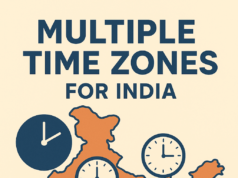On June 19, 2024, the National Testing Agency (NTA) announced the successful completion of the UGC-NET exam. This was the first common exam for Assistant Professorship (NET), Junior Research Fellowship (JRF), and PhD admissions. Next day, however, the NTA retracted its statement. It said the exam’s integrity was compromised even before it commenced. This event ran in the news cycles as the paper leak scandal. The agency announced that candidates will have to retake the exam. This caused widespread outrage and deepened the mistrust in the centralised examination system. Even if the paper hadn’t leaked, this centralised system was flawed from the start.
A centralised examination imposes rigid structures and prioritises control over freedom. This lack of freedom hinders intellectual growth and societal progress, leaving future generations ill-equipped to tackle upcoming challenges. The Gajendragadkar committee set up by UGC as far back as 1970 had the same recommendation that needs revisiting. It called for UGC to secure academic integrity by supporting autonomy of universities (Sancheti and Pillai, 2020), 192-193). Setting universities free to explore, innovate, and pursue knowledge without external interference, can ensure a robust and transparent educational environment. While this is important in every facet of how a university operates, it is especially true for how universities select their candidates.
Last year in 2023, UGC took away university autonomy for PhD admissions by creating a centralised exam. Before this centralised exam, universities conducted separate exams for PhD admissions, and followed them with a viva voce for those who cleared the cutoff marks. The commission took away university autonomy and clubbed multiple university entrances into one common entrance exam. This year the commission went a step further by combining exams for NET and JRF with the PhD entrance exam under UGC-NET. This combined exam is now an entrance test similar to other competitive exams like JEE, NEET, and CUET. This model favours candidates who are rote learners over those who excel in critical thinking. It also raises three major questions on the credibility of the one-size-fits-all approach. Are such common exams a good approach for assessments? Do they produce good quality scholars? Or are they simply a mechanism to eliminate future scholars?
When entrance exams are centralised, the quality of the exam questions and their objectivity suffers too. To accommodate a large number of students, the exam on Political Science contained strange questions of trivia like, “whom did Ram Manohar Lohia call a ‘gungi gudiya‘ (dumb doll)?”. Asking questions like this makes one wonder, what is the exam assessing for? Knowledge for trivia or awareness on political name-calling.
Combining different examinations also increases their competitiveness. It puts a pressure on candidates to figure out how to crack them not by increasing their level of knowledge but by anticipating questions better to beat other students. From all candidates appearing for the UGC-NET exam, just the top 6% qualify for Assistant Professorship (Information-Bulletin-2024), and a mere 1% secure both JRF and Assistant Professorship. Overall, the common exam has reduced the process to a game, where success hinges on a single exam rather than a holistic evaluation of a candidate’s potential.
In academia, where diversity is valued over standardisation, a common exam may fail to capture the nuanced abilities of candidates. This can lead to a narrow focus on test-taking skills, and applying it as a benchmark to determine crucial attributes like critical thinking, analytical reasoning, and academic writing. It also widens the gap between candidates who are from privileged backgrounds and those from marginalised communities, as the better off usually have better access to resources and preparation opportunities.
To fix the slide taking place in higher education three proactive steps are needed urgently. First, grant universities freedom to choose their own admission process, by allowing departments and colleges to create their own assessment criteria. Second, ensure the admission process is transparent to ensure a fair admission process. Third, expand university autonomy and let institutions decide how they want to strive to deliver quality education.
The National Education Policy 2020 aims to achieve a Gross Enrollment Ratio of 50% in higher education by 2035 (UGC, 2020). Addressing the critical issue of university admission policy, has an important role to play in pursuing NEP’s aim.
It’s important to note that the push for university autonomy is not to make it harder to get in. It is instead, to encourage every person involved with the exam to raise their game. Right from the person setting the exam to the person conducting and evaluating the exam. The state too can switch gears from playing a regulatory role to performing a supervisory role. This way, the limited capacity and resources of the state can then be optimised better to deliver a fair and transparent system.
University autonomy can foster an environment where educational institutions are empowered to innovate and improve without being bogged down by excessive bureaucratic constraints. It will also foster a diversity of models that universities can choose from and adapt to represent their own culture and vision for higher education. This way candidates too will have a choice to use the system to judge the practice and performance of educational institutions before applying for admissions. Setting universities free can foster trust, accountability, and informed decision-making.
Post Disclaimer
The opinions expressed in this essay are those of the authors. They do not purport to reflect the opinions or views of CCS.





